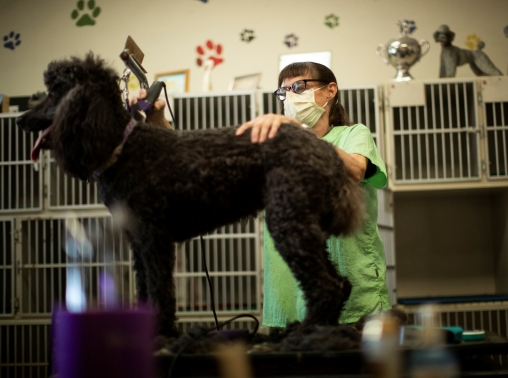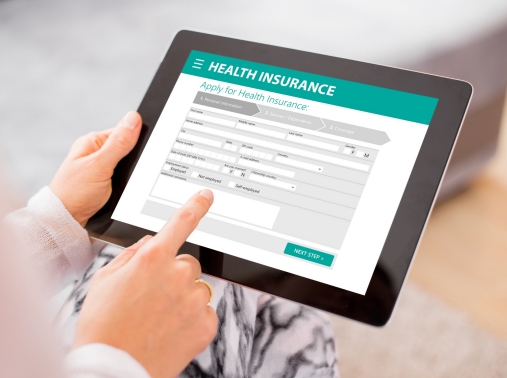|
|
RAND research and commentary on the issues that matter most
|
May 28, 2020
|
|
|
|
|
Photo by Brendan O'Brien/Reuter
|
|
|
|
In April and May, RAND surveyed roughly 1,000 teachers and 1,000 principals as the pandemic rapidly transformed education in the United States. Their responses revealed insights into what supports educators need, how they're thinking about the fall, and more. Here are a few takeaways:
- Almost all of the teachers we surveyed engaged in distance learning. But only 12 percent reported covering the full curriculum they would have taught if schools hadn't closed.
- The pandemic has likely made existing disparities in educational opportunities and outcomes even worse.
- In the fall, teachers plan to prioritize student well-being more than they did last year. Principals anticipate more emphasis on family engagement and addressing performance gaps.
RAND researchers continue to work on building the evidence base about schooling amid COVID-19. Later this summer, we'll publish a series of short reports that examine important education topics in more detail. Read more »
|

|
|
Research assistant Jae-Heon Kim conducts research on a vaccine for the novel coronavirus, San Diego, California, March 17, 2020. Photo by Bing Guan/Reuters
|
|
It's unclear when—or whether—a viable coronavirus vaccine will become available. But should that day come, the United States will grapple with a crucial question: Will the number of Americans who get the vaccine be high enough to establish herd immunity? RAND's Alina Palimaru and Marcus Dillistone of the Royal Society of Medicine explain how freedom of choice and anti-vaccination sentiment could lead some to reject immunization. Federal leadership and effective persuasion will be key to addressing this challenge. But legislative intervention for vaccine uptake may also be necessary, they say, “because sometimes choice kills.”
Read more »
|
|

|
|
Lisa Rowland, owner of Dog's Best Friend, in Pasadena, California, trims the coat of a poodle. Photo by Mario Anzuoni/Reuters
|
|
America's small business owners are facing many challenges during the pandemic. To learn more about their experiences, RAND researchers interviewed 21 entrepreneurs, including owners of restaurants, salons, and small retail shops. Their most common concern was paying fixed costs, such as rent, utilities, and insurance. Relaxing the rules of the new federal Paycheck Protection Program—which only forgives loans if 75 percent of money borrowed is used on payroll—may be one way to help business owners make these payments.
Read more »
|
|

|
|
Restaurant patrons sit at tables surrounded by plastic barriers, Bangkok, Thailand, May 8, 2020. Photo by Athit Perawongmetha/Reuters
|
|
How do models that project COVID-19 cases and deaths work? What new types of models are needed now that states are reopening? And what should policymakers watch out for when using models? RAND researchers recently sat down to answer these questions and many more. They explained that no single model can show everything we need to know about COVID-19. Nonetheless, modeling provides data that can help inform the many difficult decisions facing policymakers today.
Read more »
|
|

|
|
Manager Flory Ramirez waits for customers after his restaurant reopened, Houston, Texas, May 1, 2020. Photo by Go Nakamura/Reuters
|
|
More than 40 million Americans have filed for unemployment benefits since the end of February. According to RAND's Jason Ward, job-sharing could be one way to reduce the economic damage. This approach aims to give employees enough hours and pay so that they're at least as financially well off as they would be if they received unemployment benefits. For example, instead of laying off one worker, an employer could opt to move two workers to part-time status. There are drawbacks to this approach, but there are also several reasons why some employers may give job-sharing a try.
Read more »
|
|

|
|
Photo by grinvalds/Getty Images
|
|
A government-sponsored public health insurance option has been widely discussed as a way to expand coverage and make care more affordable. A new RAND study examines four different scenarios for implementing such a policy. The findings show that a public option could reduce premiums, potentially making them 10 to 27 percent lower than private plans. But on its own, a public option is unlikely to substantially increase the overall number of Americans who have coverage. Lower-income people are also less likely to benefit.
Read more »
|
|
|
What can be done to help U.S. civilians returning home from war zones? How can military and local government officials work together to address climate change? What makes a good strategy game?
|
|
|
|
|